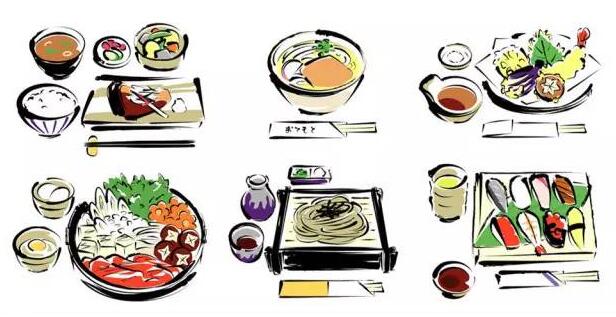

研究设计
利用膳食回顾法让受试者自行填写调查问卷,从中分析出各种食物的摄入量,在此基础上采用因子分析法提取出不同的膳食模式。搜集24小时尿液分析Na、K摄入量及Na:K比值。
研究对象
20-69岁的日本健康成年人,其中353名男性,349名女性。
结果
20个样本采集点分别分布于日本的23个县。男性和女性中各发现4种膳食模式。排除混杂因素后,研究发现“鱼+蔬菜”膳食模式与较高尿Na有一定关联,但没有统计学意义(男性P=0.37,女性P=0.06)。这种膳食模式还与男性和女性的较高尿K有关联。而“面条”饮食则与较高的尿Na(男性P=0.17,女性P=0.04)及高Na:K比值(男性P=0.02)有关联。“肉类+蔬菜+油”(男性)、“肉类+油”(女性)及“面包+糕点”这三种膳食模式与尿Na在男性受试群体不关联,与女性受试群体负相关。
结论
与西方国家的研究结果相反,此研究发现“鱼+蔬菜”及“面条”这两种膳食模式导致了高钠摄入。设定减盐的目标食物时应充分考虑到目标人群的膳食模式与钠钾摄入量之间的关系。
图片来源:百度图库
原文:
Dietary patterns extracted from the current Japanese diet and their associations with sodium and potassium intakes estimated by repeated 24 h urine collection.
Abstract
OBJECTIVE:
To identify dietary patterns in the current Japanese diet and evaluate the associations between these patterns and Na and K intakes.
DESIGN:
Dietary patterns were extracted by factor analysis from the intakes of food groups assessed with a validated self-administrated diet history questionnaire. Na and K intakes and urinary Na:K were assessed by repeated 24 h urine collection.
SUBJECTS:
Healthy Japanese adults aged 20-69 years (353 men and 349 women).
SETTING:
Twenty study areas in twenty-three prefectures in Japan. Result Four dietary patterns were identified in each sex. After adjustment for several confounding factors, the 'Fish and vegetable' pattern was associated with higher urinary Na excretion, but the association was not significant (P=0.37 in men and P=0.06 in women). This pattern was also associated with higher K excretion in both sexes. The 'Noodle' pattern tended to be associated with higher urinary Na excretion (P=0.17 in men and P=0.04 in women) and higher Na:K (P=0.02 in men). The 'Meat, vegetable and oil' (in men)/'Meat and oil' (in women) and 'Bread and confectioneries' patterns were not associated with urinary Na excretion (in men) or were negatively associated (in women).
CONCLUSIONS:
Contrary to the case in Western countries, the 'Fish and vegetable' and 'Noodle' patterns contributed to higher Na intake in Japan. Target foods for salt reduction should be set based on careful consideration of the relationships between dietary patterns and Na and K intakes in the target population.
Reference
Aya Fujiwara, Keiko Asakura, Ken Uechi, Shizuko Masayasu and Satoshi Sasaki. Dietary patterns extracted from the current Japanese diet and their associations with sodium and potassium intakes estimated by repeated 24 h urine collection. Public Health Nutrition, available on CJO2016. doi:10.1017/S1368980016000641.
翻译供稿:牛睿嘉
